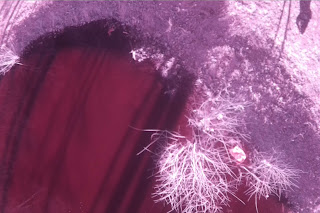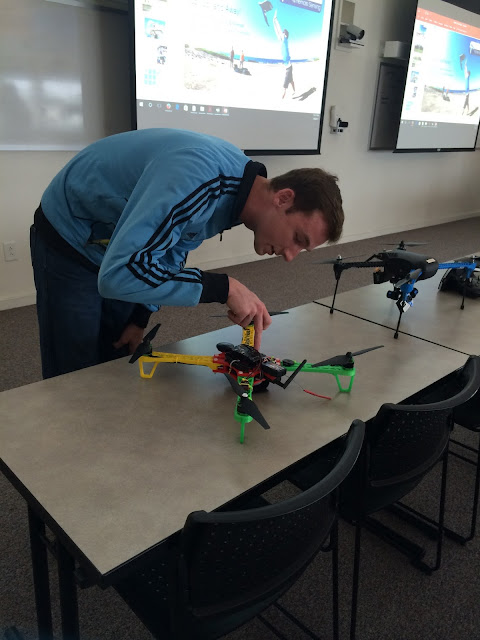 |
| Near-IR shot of our little pond. Looks like we need to focus the nIR sensor better; it's blurry relative to our RGB. |
 |
| RGB (visible light) shot of our little pond. Much crisper. |
We got a load of good imagery, and also set out points for georectifying our results using a fancy NCCU GPS.
 |
| Yes, we did this terrible thing (red duct tape holding cameras on; my shame is eternal) but had removed it for the flight that crashed. |
 |
| Note the downed drone bottom-center. Note its expression of shock and betrayal. Note how Katherine is ready to swat it with her kombucha if it makes any sudden movements. |
We also had our first crash; during normal flight operations (i.e. no janky duct-tape vertical wings interfering with the prop wash) the vehicle suddenly started veering off in a direction of its own volition.
It went into the trees despite any input I made on the control console and, understandably, experienced a rapid foliage-assisted self-disassembly and ballistic descent.
After picking up the pieces, cleaning it out, and putting on new props, the Solo is still flying fine! We do, however, need to figure out what went wrong. More on that as we dig into the post-mortem.













